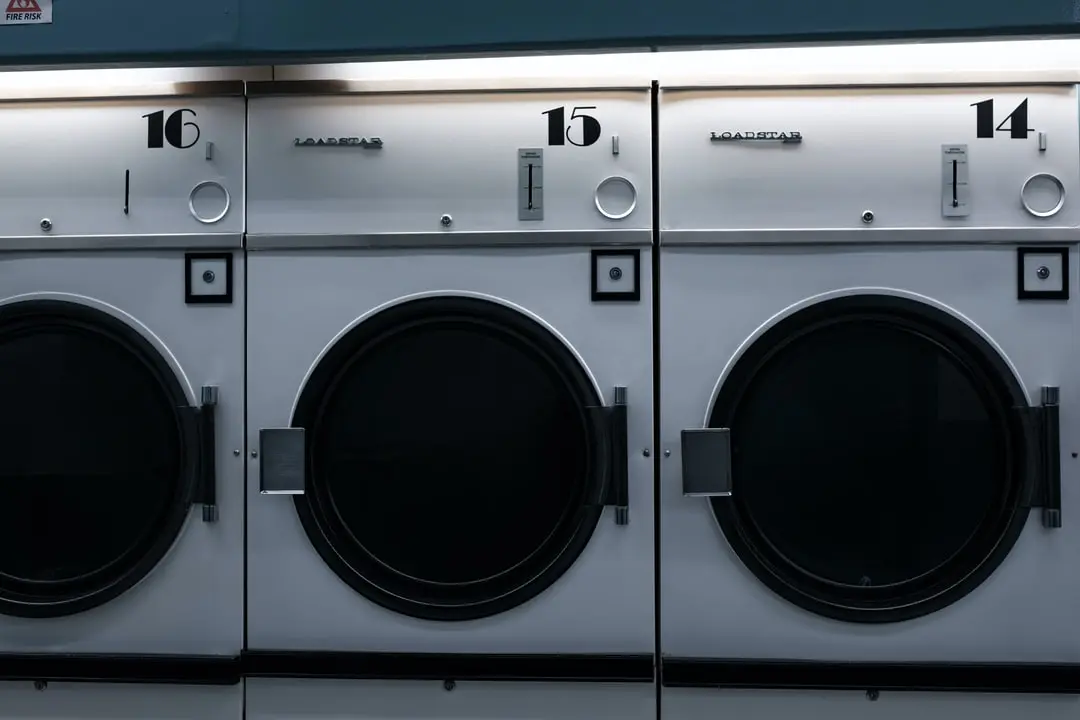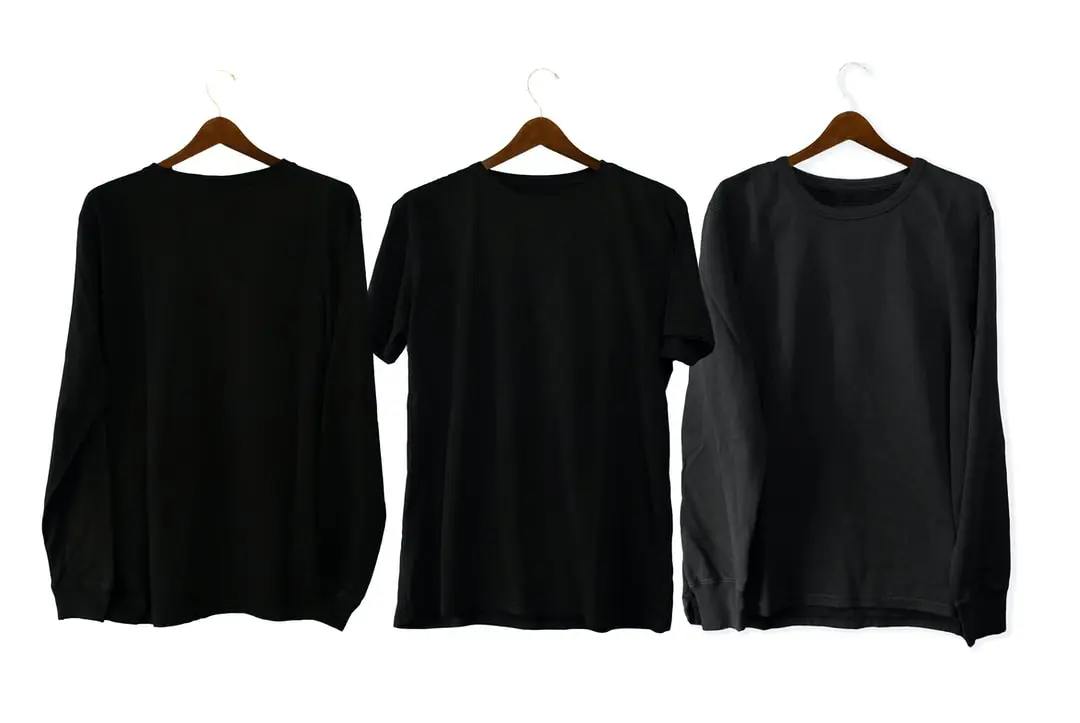To maximize the efficiency of drying your clothes in the garage, strategically choose a location with good airflow and sunlight. Opt for sturdy hangers that match the types and sizes of your garments to make the most of the drying area. Use hooks or clips to secure the clothes in place. Separate your clothes by color and fabric, rotating them periodically for even drying.
Ensure there are no obstructions blocking the airflow around the garments, consider using fans for better circulation, and take advantage of natural sunlight. It’s important to prevent moisture build-up by maintaining proper ventilation and promptly fixing any leaks.
When storing the dried clothes, consider space-saving solutions for efficient organization. By utilizing the available space, airflow, and sunlight in your garage effectively, you can achieve the best results.
Key Takeaways
To optimize the drying process, place your wet clothes near windows to benefit from increased airflow and sunlight exposure, helping them dry faster. Make sure to use sturdy hangers that are specifically designed for wet clothes to prevent any damage to the fabric. It’s also a good idea to separate your clothes by color and fabric type to avoid any potential harm during the drying process. Additionally, ensure proper ventilation and maintain a moderate temperature in the garage to prevent any musty odors from developing.
When setting up drying racks, be sure to use them efficiently by rotating your clothes regularly for even drying and to maximize the available space. By following these tips, you can effectively dry your clothes in the garage while keeping them in good condition.
Ideal Location for Drying Clothes
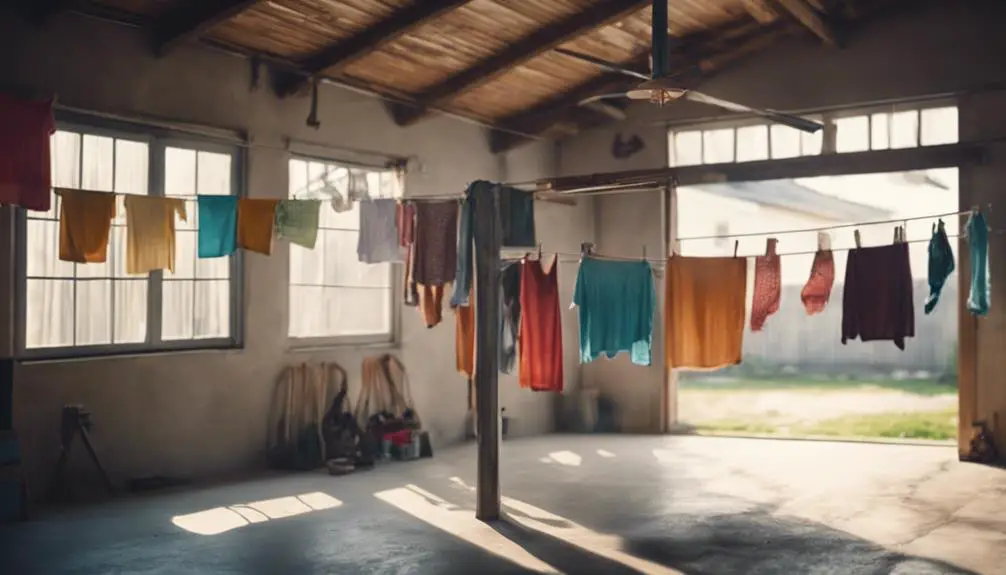
When it comes to drying clothes efficiently in your garage, the location plays a key role. Consider utilizing outdoor options like a clothesline or drying racks within your garage space. Not only do these alternatives save energy, but they also reduce drying time, ensuring your clothes are ready in no time.
When selecting the perfect spot, look for an area in your garage that receives good airflow and sunlight. Hanging your clothes near a window or a vent can hasten the drying process and ensure thorough drying. Additionally, ensure there’s enough space between items to prevent them from touching and to promote proper air circulation.
Exploring different spots in your garage for drying clothes can lead to optimal results. Picture this: hanging your laundry in a well-ventilated area with ample sunlight can make a significant difference in the drying efficiency.
Let’s delve into the benefits of choosing the right location for drying clothes in your garage.
Preparing the Garage Space
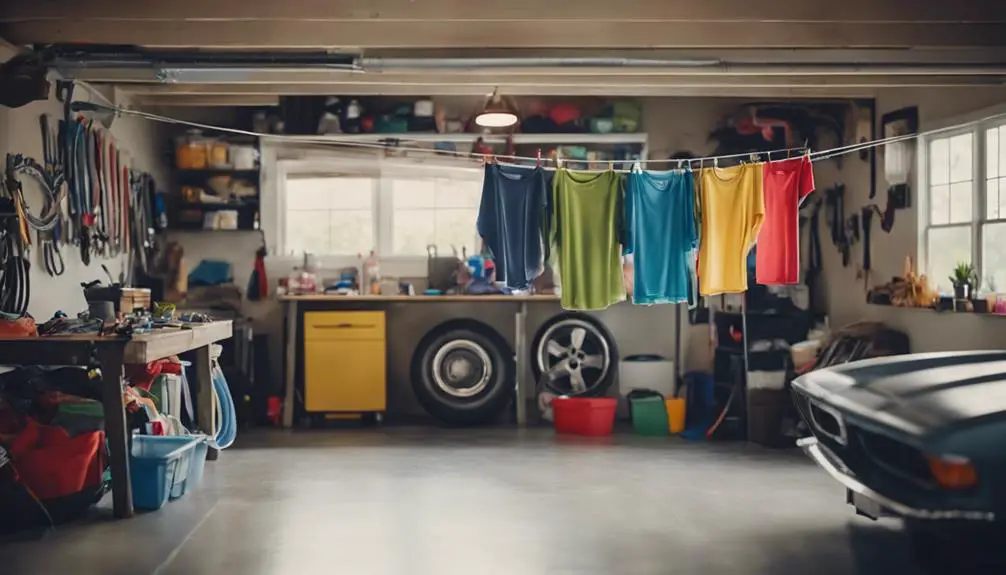
When preparing your garage space for drying clothes, it’s crucial to assess the available area for hanging and ensure proper ventilation and sunlight exposure. This will help maintain the quality of your clothes and prevent any unwanted odors.
Here are some essential steps to effectively prepare your garage space:
Maintain a moderate temperature in the garage to aid in the drying process and prevent excessive humidity. Proper airflow is essential for drying and to prevent musty smells from lingering on your clothes.
Additionally, installing screens or mesh barriers on windows and vents can help keep rodents and insects out, ensuring your clothes remain clean and undamaged.
Choosing the Right Hangers

When choosing hangers for your garage clothesline, it’s crucial to consider the material type for long-lasting durability.
Matching the size and shape of the hanger to the specific garments you plan to hang is essential for preserving the integrity of your clothes during the drying process.
This simple step can help ensure that your clothes remain in good condition and ready to wear whenever you need them.
Hanger Material Types
When choosing hangers for drying clothes in the garage, opt for materials like wood, plastic, or metal for durability and maintaining the shape of your garments.
Consider the following factors when selecting hangers:
- Durability: Choose sturdy hangers that can bear the weight of wet clothes without bending or breaking.
- Color Options: Explore a range of colors to match your preferences or create a color-coded system for organizing different types of clothing.
Size and Shape Requirements
When selecting hangers for drying clothes in the garage, it’s essential to consider the dimensions and shapes of the clothing items. Choosing hangers that match the size of your garments is crucial for effective drying.
For larger items like coats or jackets, opt for sturdy hangers with broad shoulders to provide adequate support and prevent misshaping.
Delicate pieces such as blouses or dresses may benefit from slim, padded hangers that help preserve their shape without causing any indentations.
When it comes to hanging methods, look for hangers with hooks or clips that securely hold the clothing in place on your drying rack or rod. Shape considerations are equally important – select hangers that complement the natural contours of your clothes to prevent stretching or creasing.
Efficient use of space is key in a garage setting, so choose hangers that can be arranged closely side by side without overcrowding, maximizing your drying area.
Organizing Clothes for Drying
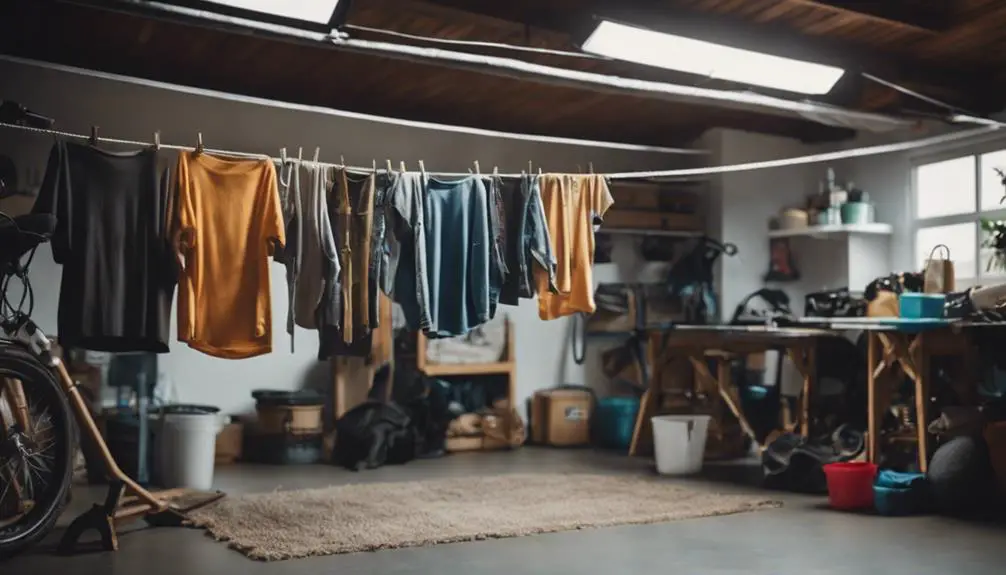
Efficiently arranging clothes for drying in your garage setup is essential for maximizing space and airflow. To ensure your clothes dry effectively and stay in good condition, consider these valuable tips:
Separate your garments by color to prevent any potential color bleeding during the drying process. This simple step can help maintain the vibrancy of your clothes and extend their lifespan.
Sort your clothes based on fabric type to prevent damage. Delicate fabrics require gentle handling, so it’s best to keep them separate from heavier items to avoid stretching or tearing.
Rotate your clothes according to the season to ensure that all items receive adequate drying time. This practice not only helps manage space but also allows for proper airing out of seasonal clothing.
Maximizing Air Circulation
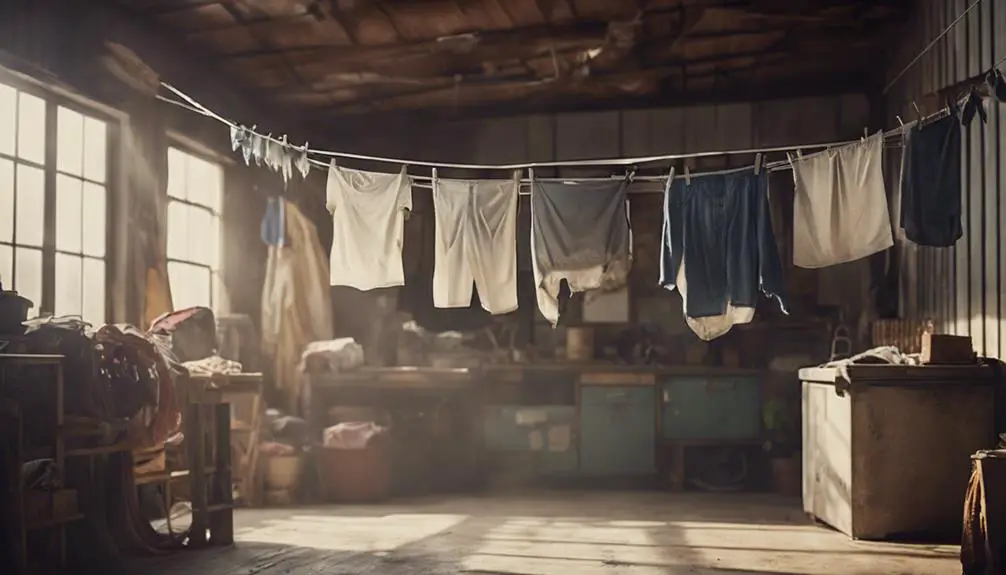
To enhance the drying efficiency of your clothes in the garage, it’s crucial to maximize air circulation within the space. Proper airflow patterns play a key role in reducing drying time and ensuring your clothes dry effectively.
Make sure there are no obstacles blocking the airflow around your hanging clothes, and consider strategically placing fans in the garage to improve air circulation and expedite the drying process.
Maintaining a moderate temperature in the garage is also essential when drying clothes. Extreme temperatures can prolong drying time, so it’s important to keep the area comfortably warm.
Monitoring humidity levels is equally important, as excess moisture in the air can hinder the drying process. If your garage tends to be humid, using a dehumidifier can help create a more suitable environment for drying your clothes efficiently.
Sunlight Vs. Artificial Light
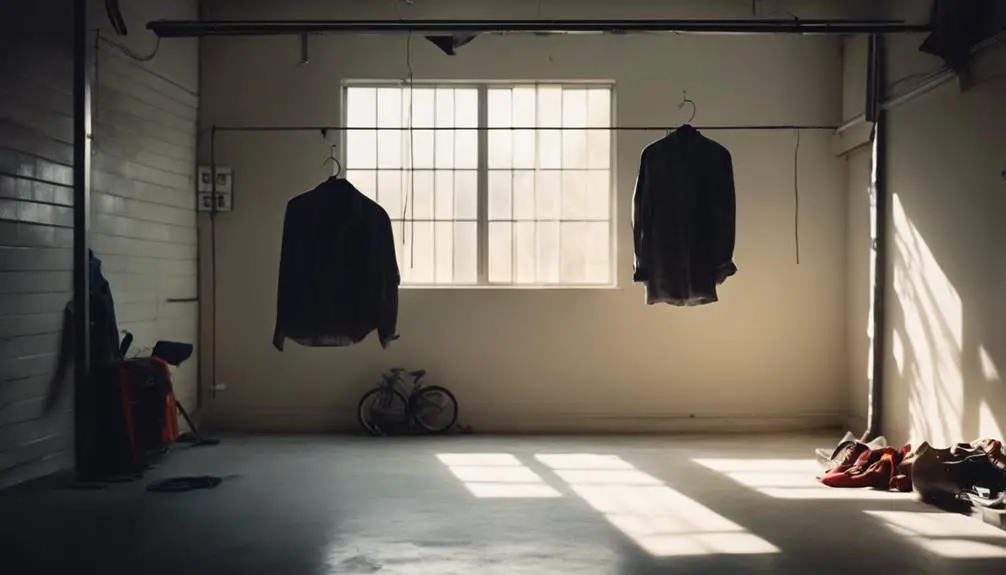
When it comes to drying clothes in a garage, utilizing natural sunlight proves more efficient than relying solely on artificial light sources. Sunlight, being a potent energy source, aids in quick and effective drying, unlike artificial light which may lack the warmth and intensity required for the task.
Sunlight not only dries clothes but also naturally disinfects them with its ultraviolet rays, leaving a fresh and clean scent. Moreover, it’s eco-friendly and cost-effective as it doesn’t require electricity.
On the other hand, artificial light may be less energy-efficient and lack the sanitizing properties of sunlight, potentially leading to longer drying times and higher energy costs. Therefore, harnessing the power of the sun for drying clothes in a garage presents a more efficient and environmentally friendly solution.
Preventing Clothes From Touching
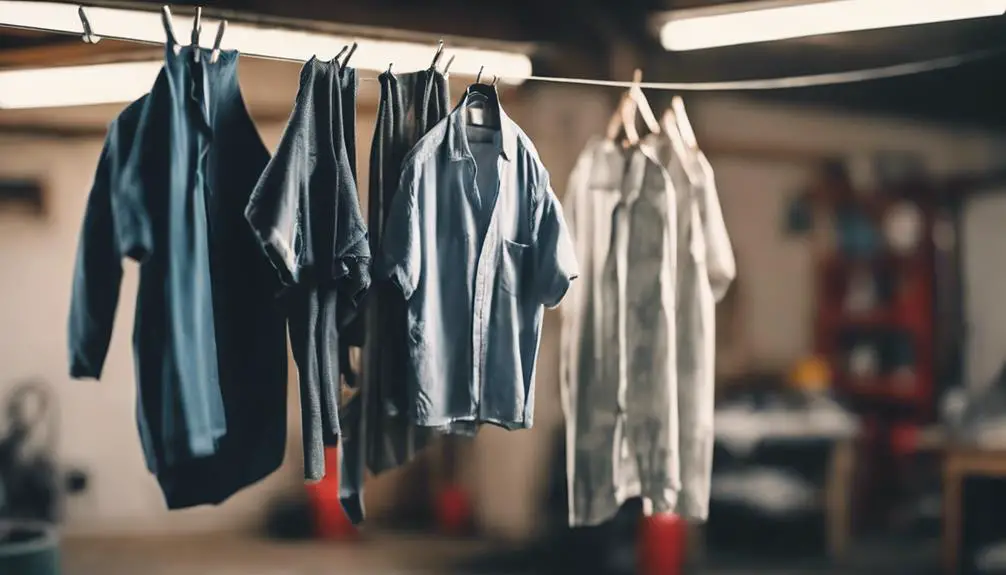
To prevent potential stain transfer and damage between your clothes while drying in the garage, it’s a good idea to use clothing pins or hangers. This simple step will keep your garments from touching each other, ensuring they come out of the drying process looking fresh and clean.
By allowing a bit of space between each piece of clothing, you also promote better air circulation, which can help speed up the drying time.
When damp clothes come into contact during drying, there’s a risk of colors bleeding or fabric textures getting compromised. Using clothing pins on a line or hangers on a rack can effectively prevent these issues and preserve the quality of your clothing.
Moreover, by keeping clothes from touching, you maximize the use of space in your garage, enabling you to dry more items without overcrowding the area. This not only improves airflow but also leads to quicker drying times, resulting in efficiently laundered clothes.
Monitoring Drying Progress
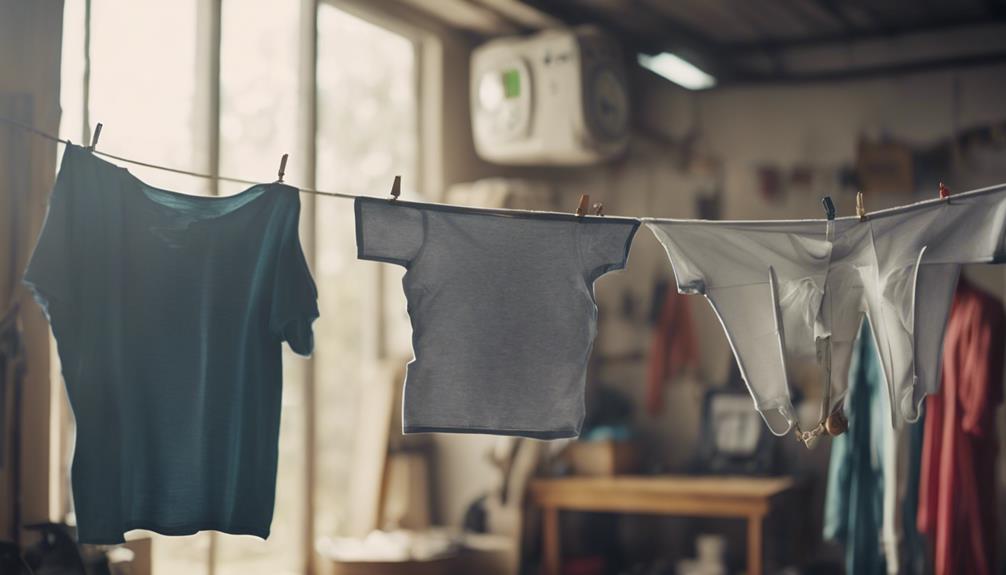
Monitoring the drying progress of your clothes in the garage is essential to ensure they’re ready when you need them. Here are some tips to help you effectively manage your time and check the progress:
To stay on top of the drying process, set a timer or schedule regular check-ins. This will prevent your clothes from sitting damp for too long. Experiment with different drying techniques like hanging your clothes in various spots or using fans to improve airflow. These methods can help speed up the drying process and ensure even drying.
Rotate the position of your clothes on the drying rack or line to expose different parts to better airflow, aiding in more efficient drying.
Avoid using clichés and overused phrases, and focus on clear, straightforward language to explain the importance of monitoring drying progress. Remember to choose active voice for clarity and provide specific examples or product recommendations as needed.
Avoiding Moisture Build-Up
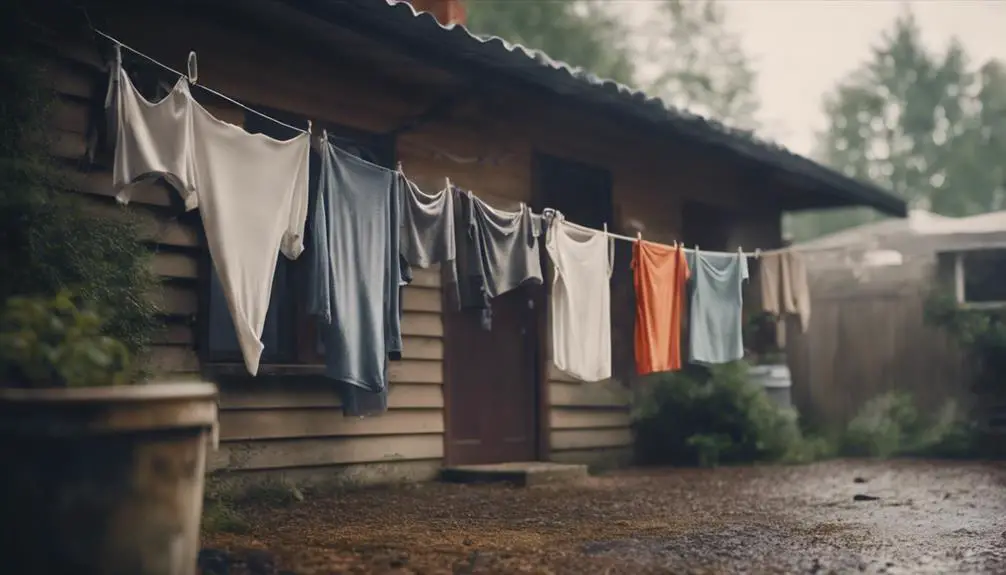
To prevent moisture build-up while drying clothes in the garage, it’s crucial to ensure proper airflow throughout the space. Good ventilation is key to preventing mold growth and musty odors on your freshly laundered items. Keep windows or doors open to allow fresh air to circulate, aiding in quicker drying and reducing the chances of lingering moisture in the garage.
If natural ventilation is lacking, consider using dehumidifiers to regulate humidity levels. Dehumidifiers are effective in removing excess moisture from the air, creating a drier environment less conducive to mold. Place the dehumidifier in a central spot for optimal results.
Moreover, be vigilant for any leaks or excess moisture sources in the garage and address them promptly. By maintaining proper airflow and a dry environment, you can enhance your clothes drying process without the risk of developing musty odors.
Storing Dried Clothes Efficiently
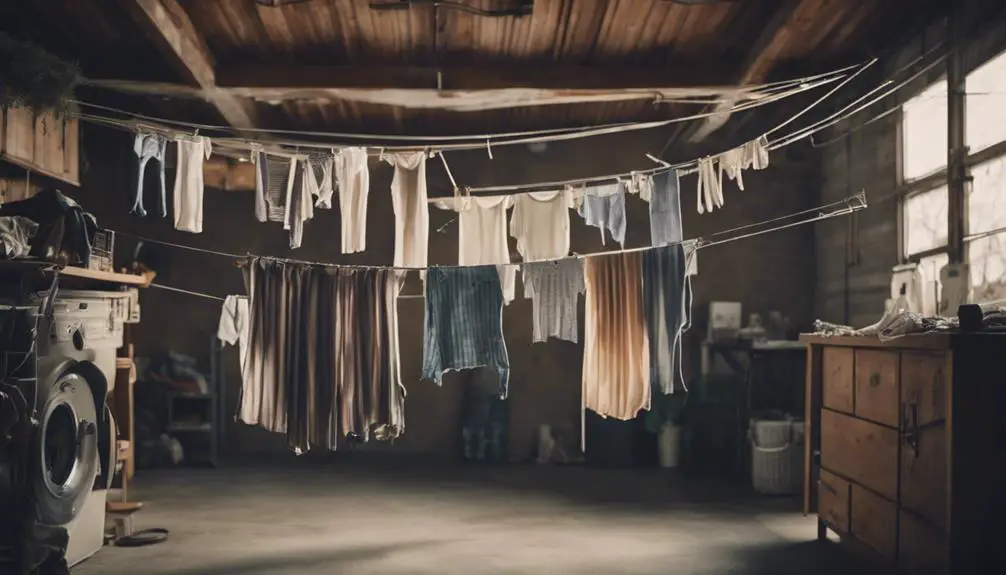
To optimize the space in your garage, consider implementing space-saving storage solutions to keep your dried clothes neatly arranged and easily accessible.
Sorting your garments by type can simplify the process of locating specific items when needed.
Adopting efficient storage techniques will assist you in maintaining a well-organized and practical storage area for your clothing.
Space-Saving Storage Solutions
Maximize your garage space by utilizing vertical storage solutions to efficiently store your dried clothes.
When it comes to optimizing space in your garage for clothing storage, consider the following strategies:
- Wall-mounted Drying Racks: Install foldable drying racks on the walls to hang clothes vertically. This not only saves floor space but also promotes air circulation for quicker drying.
- Overhead Storage Bins: Utilize overhead storage bins or shelves to neatly organize folded clothes without occupying valuable floor space. By utilizing this method, you can make the most of the vertical space in your garage.
Organizing Clothes by Type
When organizing clothes by type in your garage, categorize them based on their function and how often you wear them. This will help you create a system that optimizes space and makes it easier to find specific items when you need them.
Start by sorting your clothes into different categories like workwear, casual wear, formal attire, and seasonal pieces. Within each category, group your clothes by color to make it visually appealing and practical. This simple method won’t only make your garage look more organized but will also save you time when picking out your outfits.
It’s important to consider fabric care when organizing clothes by type. Keep delicate fabrics separate from more durable ones to prevent any damage and ensure their longevity. Store delicate items in a designated section or on hangers to maintain their quality.
Conclusion
Congratulations on successfully transforming your garage into a practical laundry space!
Now, imagine the scene as your clothes sway gently in the musty air, reminiscent of sails on a forgotten pirate ship navigating stormy seas.
With your ingenuity and resourcefulness, you’ve turned a mundane area into a functional drying area. Who needs a fancy dryer when you can enjoy the rustic charm of a garage clothesline?
Keep hanging those clothes and embracing the domestic pirate lifestyle!




